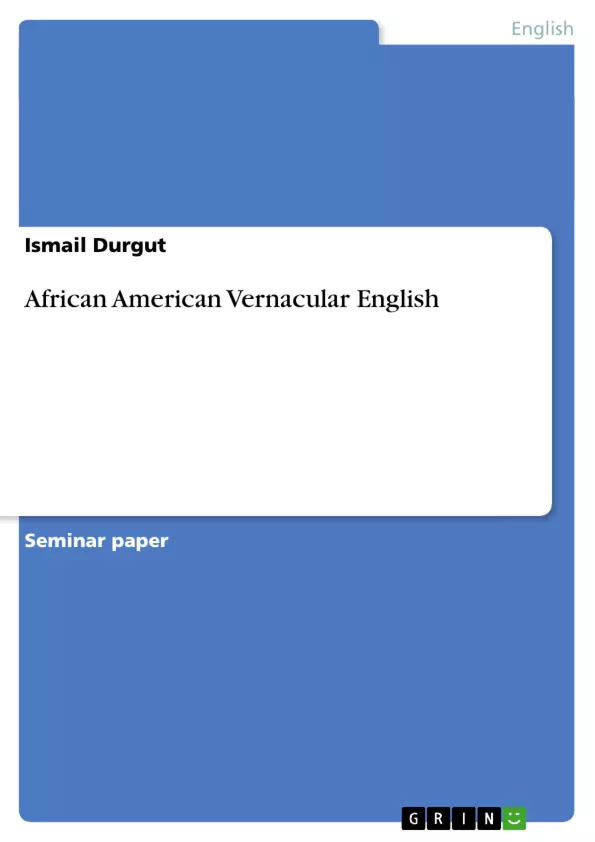The majority of the US-citizens of African ancestry speak a characteristic variety of English that has been referred to by several names. It has variously been called Non-Standard Negro English, Negro Dialect , Black English Vernacular, Black English, African American English, African American Vernacular English, Ebonics, etc. In this paper, I will use the term African American Vernacular English, abbreviated AAVE, because it is the term most current among linguists today. The term “vernacular” refers to the everyday language spoken by a speech community, often a non-standard variety.
No other variety inside the United States has been studied as much as AAVE. During the last fourty years, many works have been released concerning this topic. This paper is an overview of AAVE. It starts with the historical backgrounds of the variety by discussing the major theories concerning its origin. The main part of this paper deals with AAVE’s linguistic features in comparison to Standard American English. The features are subdivided into the sub-chapters phonology, grammar and vocabulary. A summary forms the final chapter of this paper.
Inhaltsverzeichnis (Table of Contents)
- Introduction
- History
- Features
- Phonology
- Vowel system
- Consonant system
- Stress
- Grammar
- Time reference
- Negation
- Other grammatical features
- Vocabulary
- Phonology
- Summary
Zielsetzung und Themenschwerpunkte (Objectives and Key Themes)
This paper provides an overview of African American Vernacular English (AAVE), focusing on its historical development and linguistic features. It compares AAVE to Standard American English, examining phonological, grammatical, and vocabulary differences.
- Historical origins of AAVE and the competing theories (creolist, dialectologist, and West African language influence).
- Phonological features of AAVE, including vowel and consonant systems and stress patterns.
- Grammatical features of AAVE, such as tense and aspect systems, negation, and other grammatical constructions.
- Vocabulary differences between AAVE and Standard American English.
- AAVE in comparison to Standard American English.
Zusammenfassung der Kapitel (Chapter Summaries)
Introduction: Introduces AAVE, its various names, and the paper's scope, which will cover historical background and linguistic features (phonology, grammar, vocabulary).
History: Discusses three major theories regarding AAVE's origins: the creolist hypothesis (AAVE descended from a creole), the dialectologist hypothesis (AAVE developed from dialects spoken by white speakers), and the theory suggesting derivation from West African languages. The chapter explores evidence supporting each theory.
Features (Phonology, Grammar, Vocabulary): This section, divided into subsections, details the specific phonological, grammatical, and vocabulary characteristics of AAVE, comparing them to Standard American English. Specific details about the subsections are not included here to avoid being overly detailed.
Schlüsselwörter (Keywords)
African American Vernacular English (AAVE), Black English Vernacular (BEV), Ebonics, Standard American English, Creolist Hypothesis, Dialectologist Hypothesis, Phonology, Grammar, Vocabulary, Language Contact, Language Variation, Sociolinguistics.
- Quote paper
- Ismail Durgut (Author), 2009, African American Vernacular English, Munich, GRIN Verlag, https://www.grin.com/document/124211



